Life Part 4/4 - The story of energy supply.
Life is an active process. From the very beginning, energy was needed to make molecules and a little later to allow cells to multiply. Life has been creative with the problem of energy supply.
Important processes.
At least three important steps have contributed to the energy supply of life. Glycolysis, photosynthesis and aerobic energy production.
All three use the unique molecule ADP/ATP. Whoever invented that molecule deserves the Nobel Prize:
- ADP is a sugar (Adenosine) with two (Di) phosphates (Phosphate).
- ATP is a sugar (Adenosine) with three (Tri) phosphates (Phosphate).
- Constantly one molecule is going to be transformed into another molecule and then vice versa. ADP is the empty battery that is charged to ATP and that is then the full battery. And then the full battery will release its charge again and become the empty battery.
- Chemically, electrons are exchanged during this conversion. In essence, it is about redox reactions.
- The cell (the first life) is an organized structure. Life costs energy. So energy must be constantly supplied from outside (this is how the batteries are charged). And with that energy, the cell drives chemical reactions that we know as life (this is how the batteries are discharged).
- Living as a cell means performing a certain function (that costs pennies) and that also means turning one cell into two (and that also costs pennies).
It is therefore important for the cell to collect energy and to store it temporarily and then release it a little later at the appropriate time. The ADP-ATP system is a godsend.
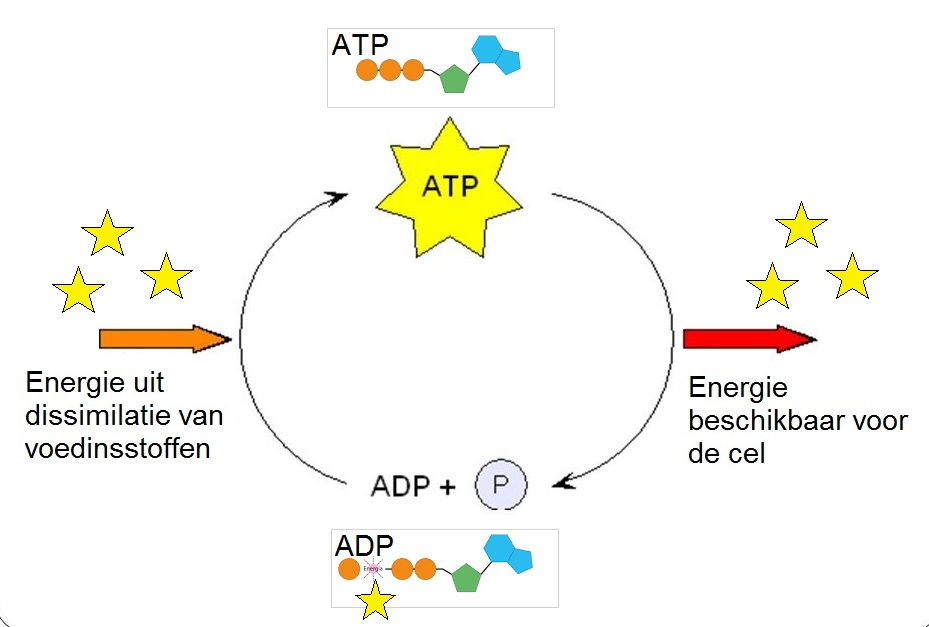
This illustration can be seen on the Wikipedia website.
Glycolysis.
This means fermentation. Glucose is broken down, releasing energy and no oxygen is needed for this. By the way, there was no oxygen on our planet at that time.
It is thought that this process, which still exists today, originated about 3 billion years ago.
So we get energy, we can’t let it escape and we have to store it so that we can use it for something else later. Just say to live.
The attentive reader wonders where that glucose comes from. I refer back here to Stanley Miller’s famous experiment in article Live Part 4/10. In the primordial ocean that is plagued by lightning strikes and UV light, glucose can be formed on an accidental basis. Now we’re going to help that coincidence a little bit, and that happens in photosynthesis.
Photosynthesis.
In this process of producing glucose à volonté, two things are needed:
- Sunlight, that has been there from the beginning. But the atmosphere first had to clear up a bit before that sunlight could penetrate sufficiently to the earth’s surface.
- Leafy green, now we find that in all green plants. But in the past, this only occurred in the so-called green bacteria. They still exist today and in a primitive version they were the first life forms long ago.
Very simple. The sunlight is the energy factor that converts ADP into ATP, so the battery is charged. Later, that ATP can be used to build up glucose. ATP loses its energy, so the battery is discharged and a sugar is created that has the energy in it.
So now we have a lot of glucose. So we could stop here and say that’s it. We make glucose in photosynthesis and break it down back into glycolysis and life goes its own way.
But it has to be a bit better. Glycolysis without oxygen is not really profitable, a lot of potential is lost. That is why there is a third process and that is called aerobic energy production.
Coincidence or not, but during photosynthesis oxygen is created as a kind of by-product. We all know that we need that oxygen today.
Aerobic energy production.
About two billion years ago, let’s say, there was enough oxygen in the atmosphere. This is a very reactive substance that can cause fires, for example.
The same reactivity was suddenly used to break down the glucose. So we are still looking for as much ATP as possible to be able to pay for our lives. By using oxygen in the breakdown of glucose, 38 molecules of ATP can suddenly be formed from 1 molecule of glucose, which is a lot more than with the first ordinary glycolysis.
So suddenly life flies forward. There is no question of an energy crisis and we are still reaping the sweet fruits of it today.
One more point: “Where does this aerobic energy production take place?” Well that takes place in the mitochondria, these are parts of a modern cell. So life is evolving from a very first primitive cell to a modern cell today. The 3.5 billion years that there is already life on Earth represents an incalculable period of time. Even the slowest process can be completed at that time.
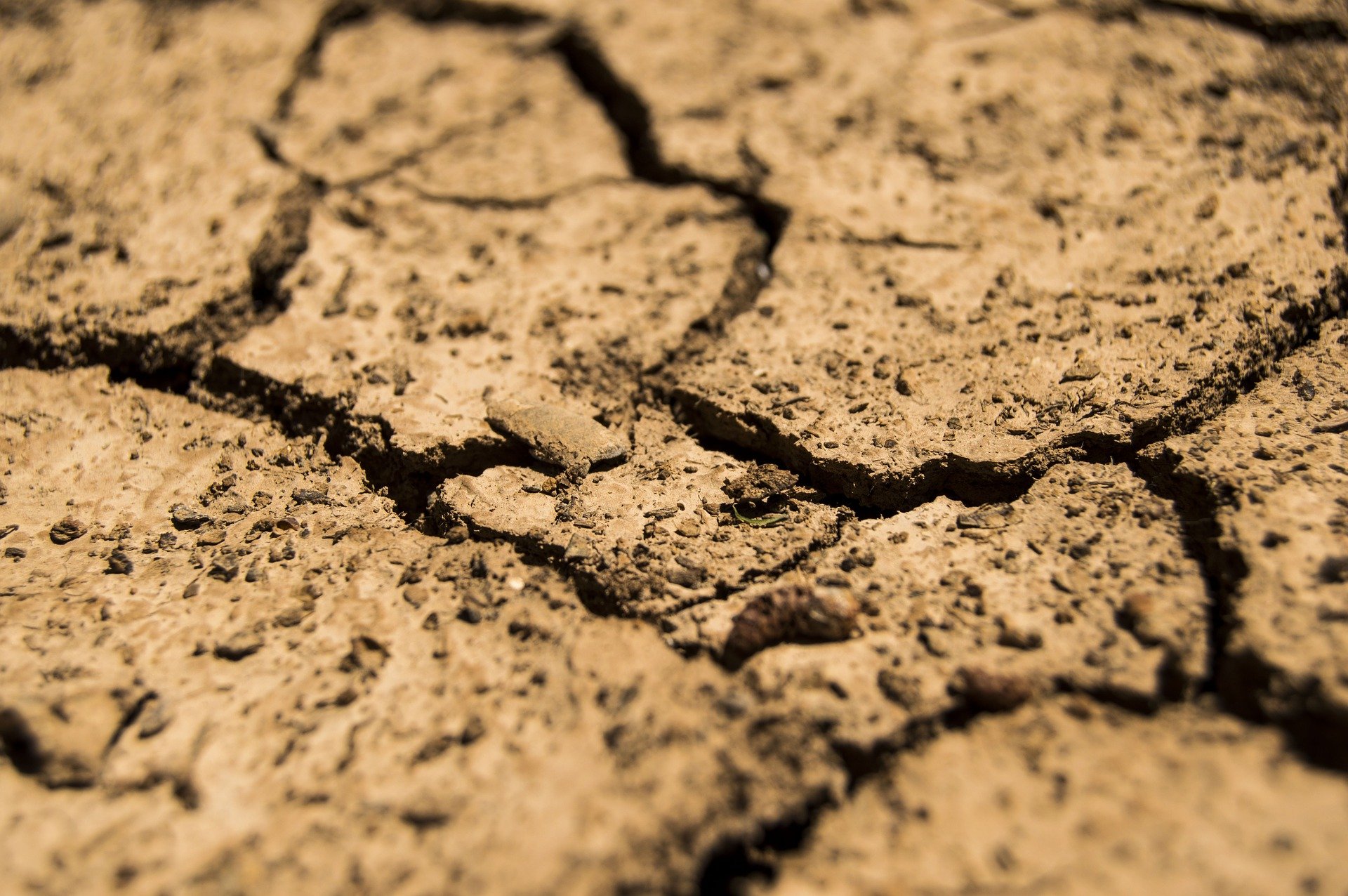

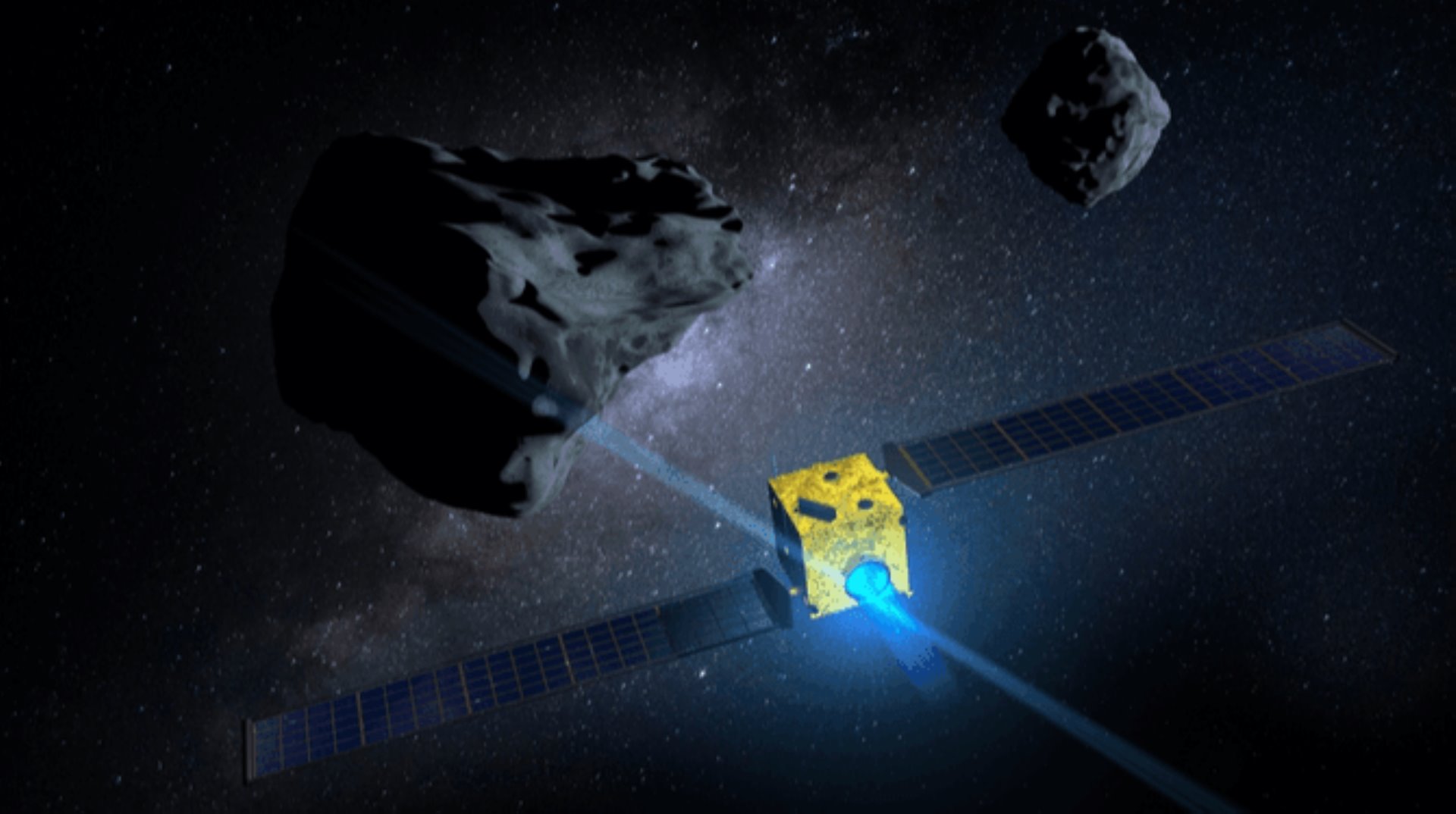
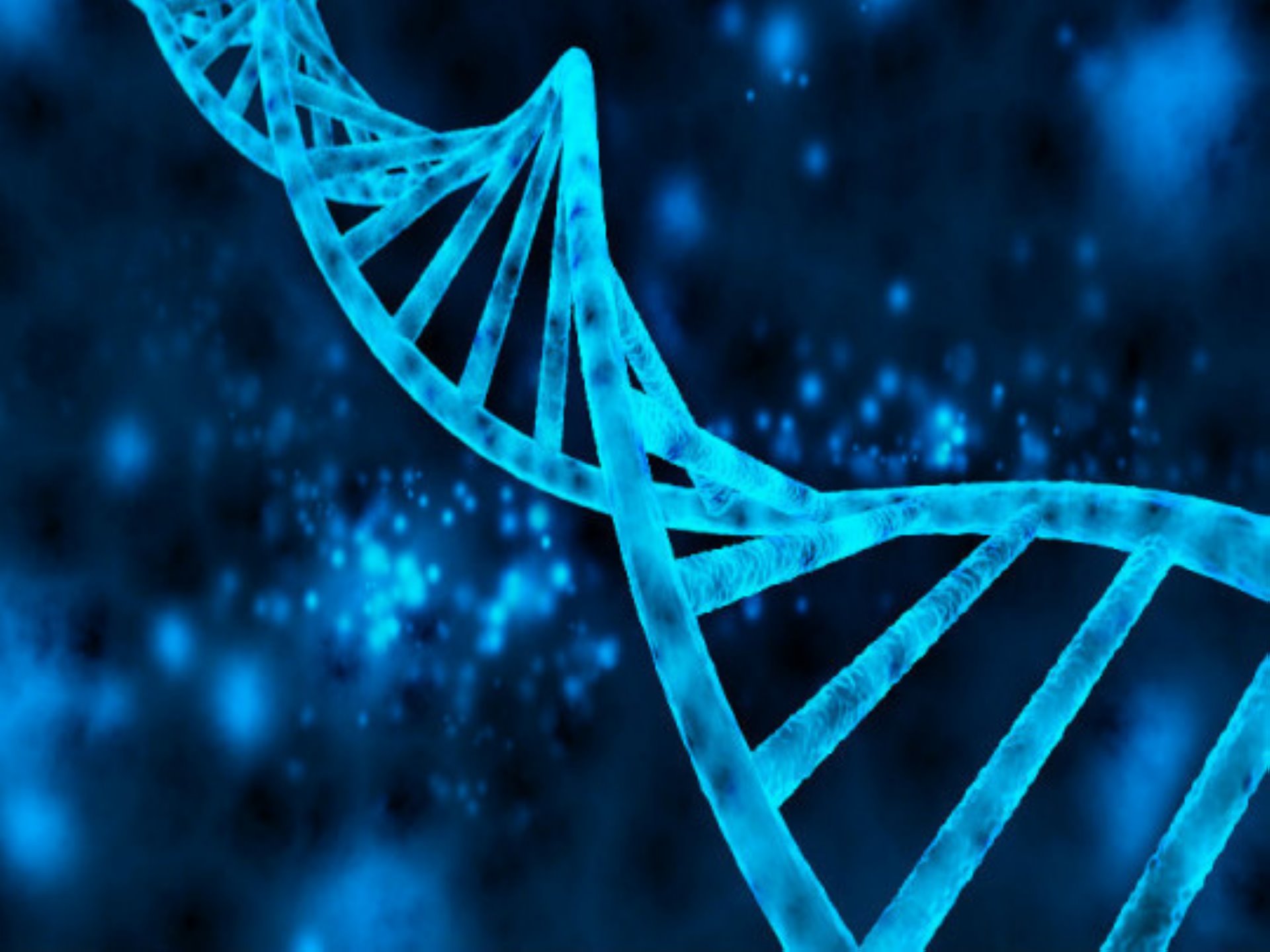
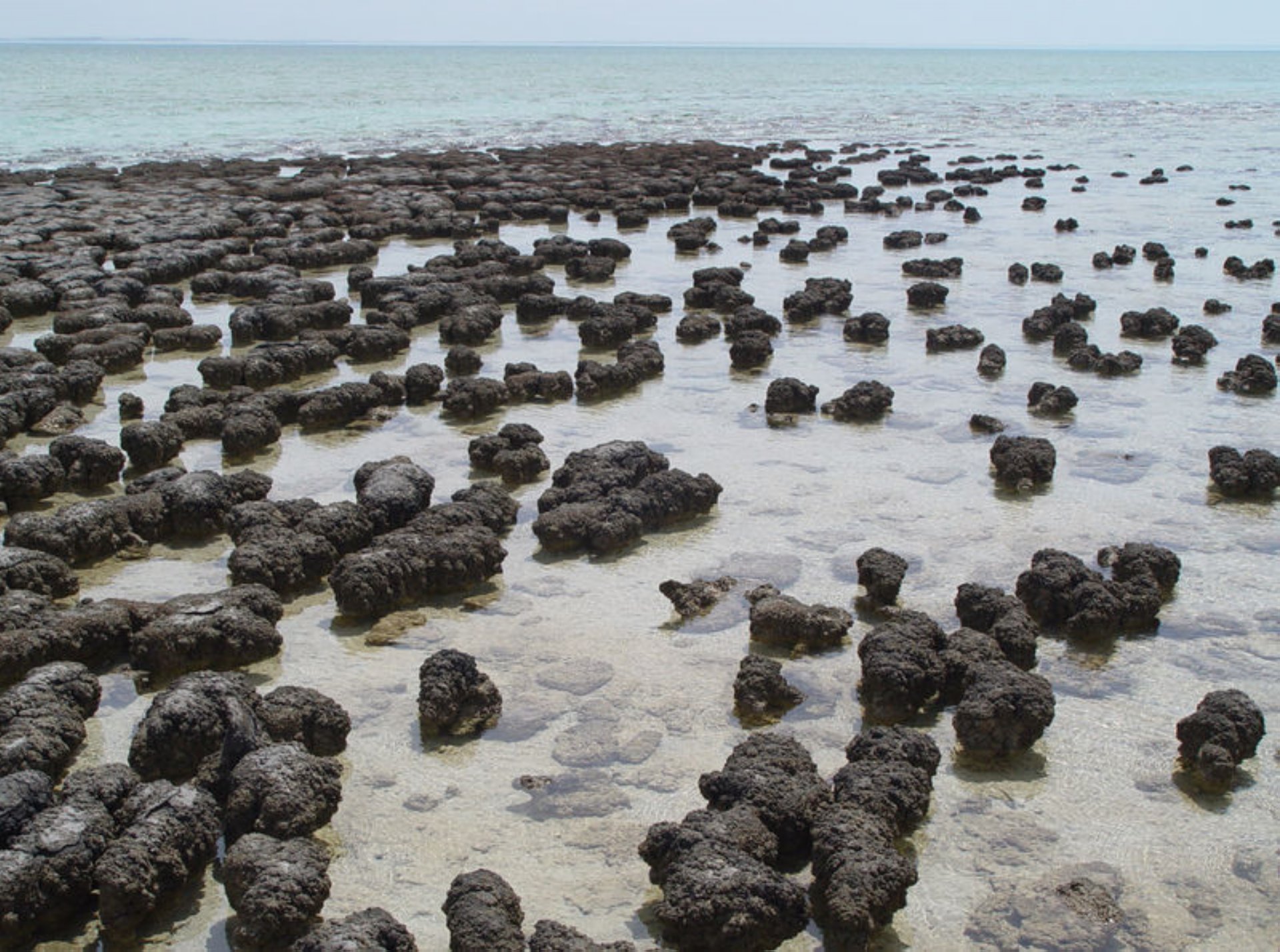
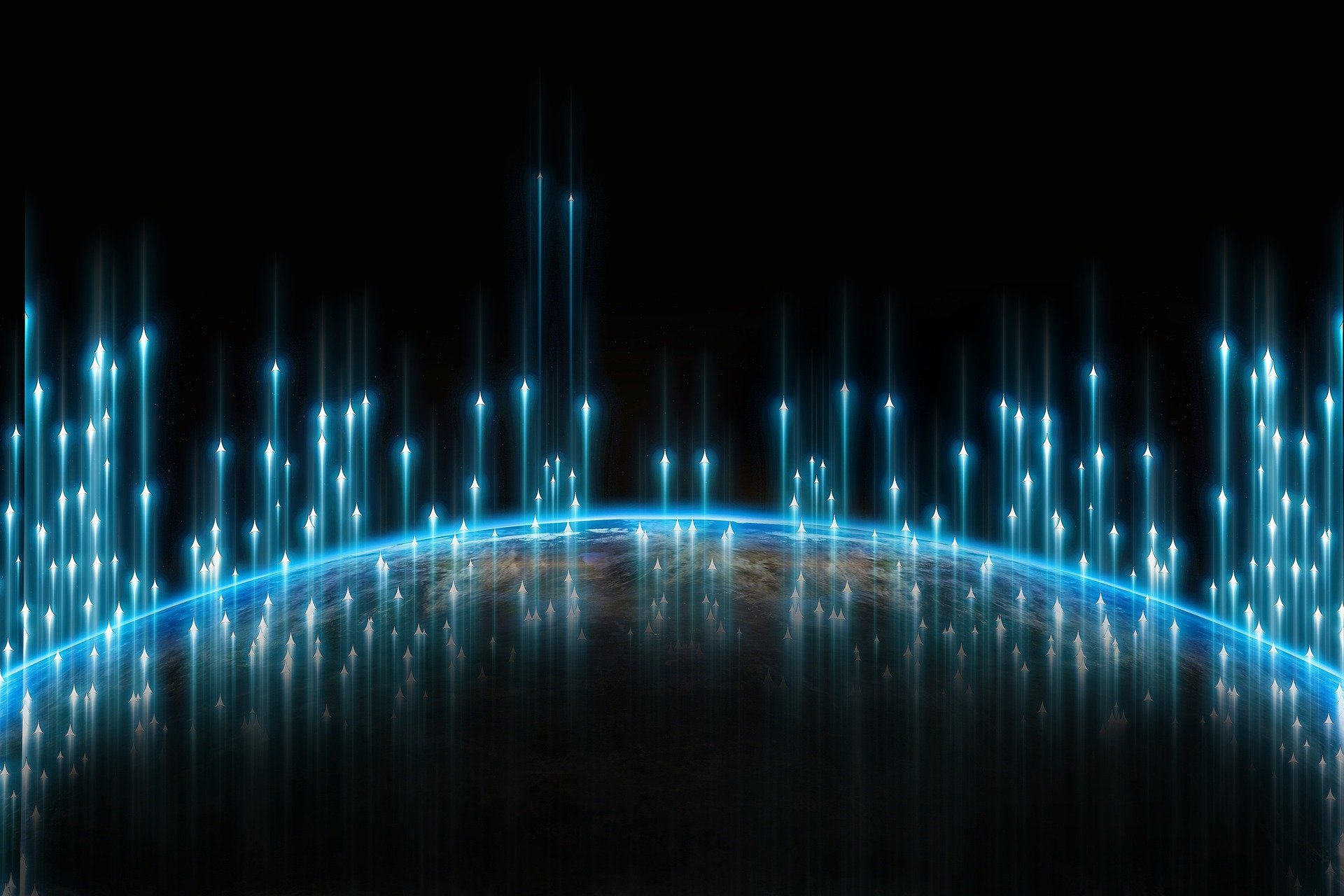
Comments